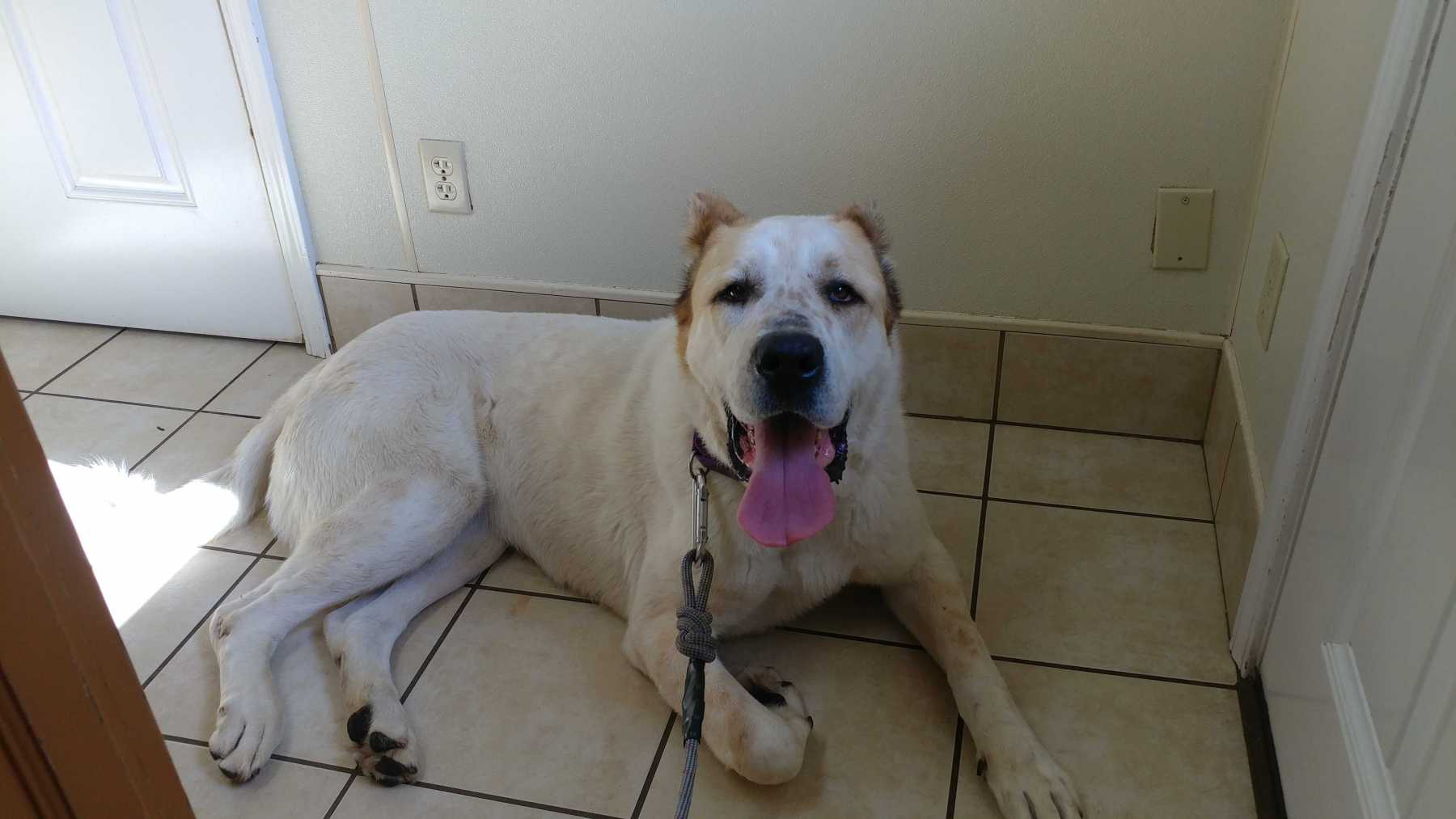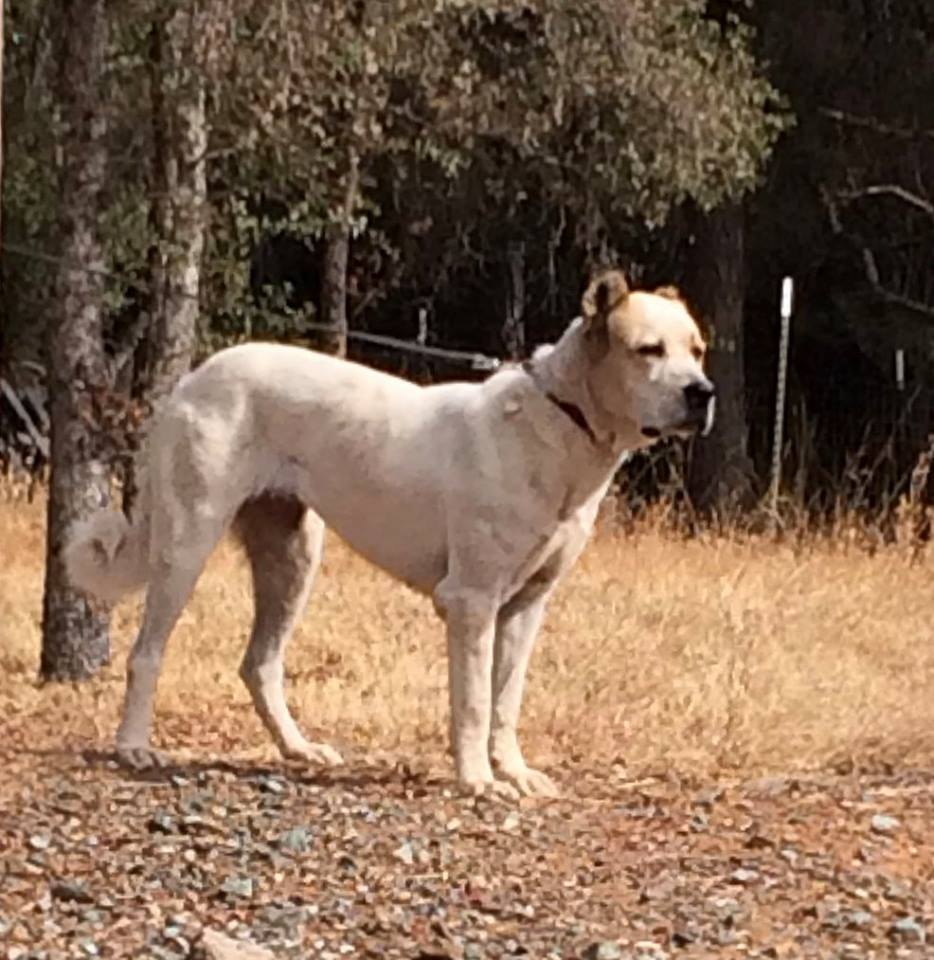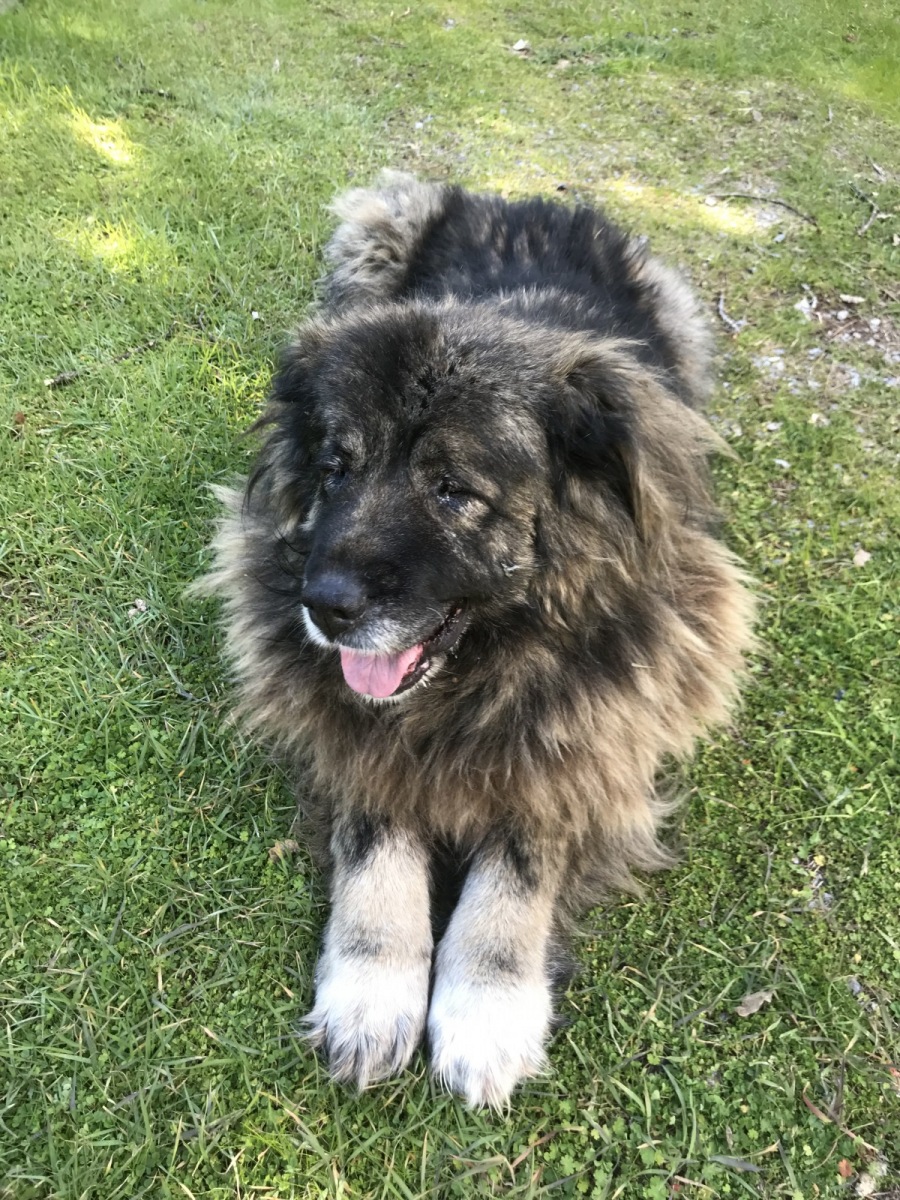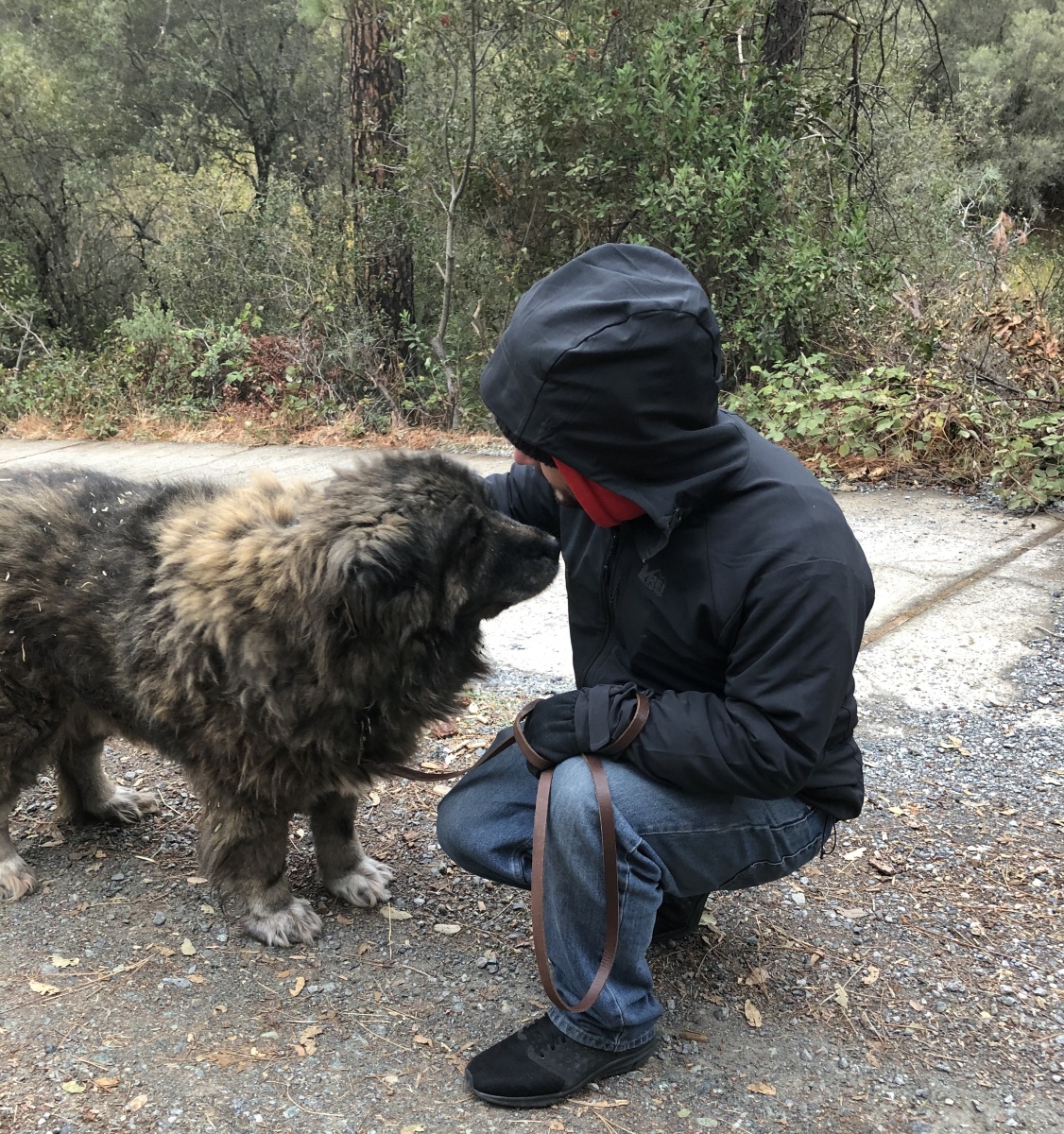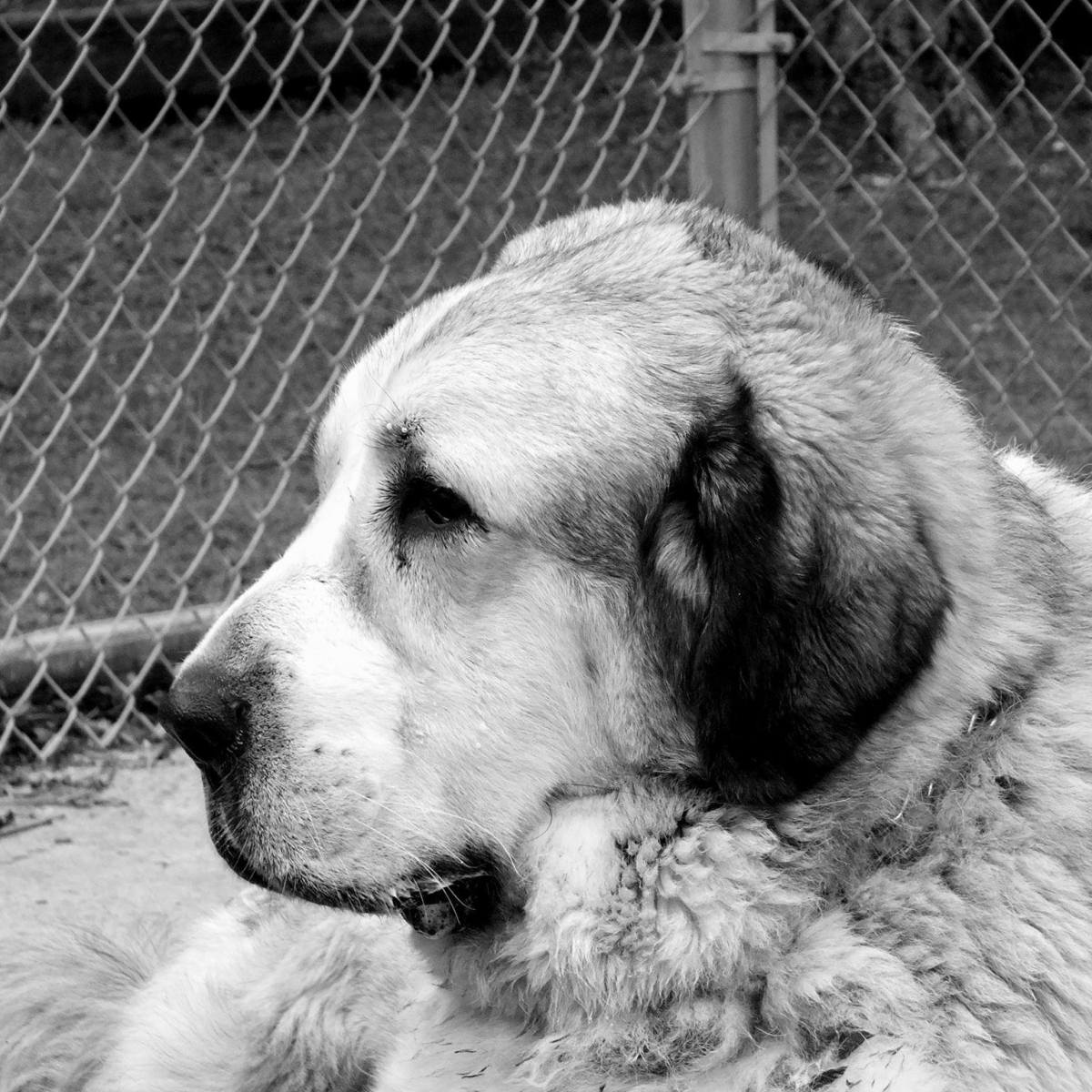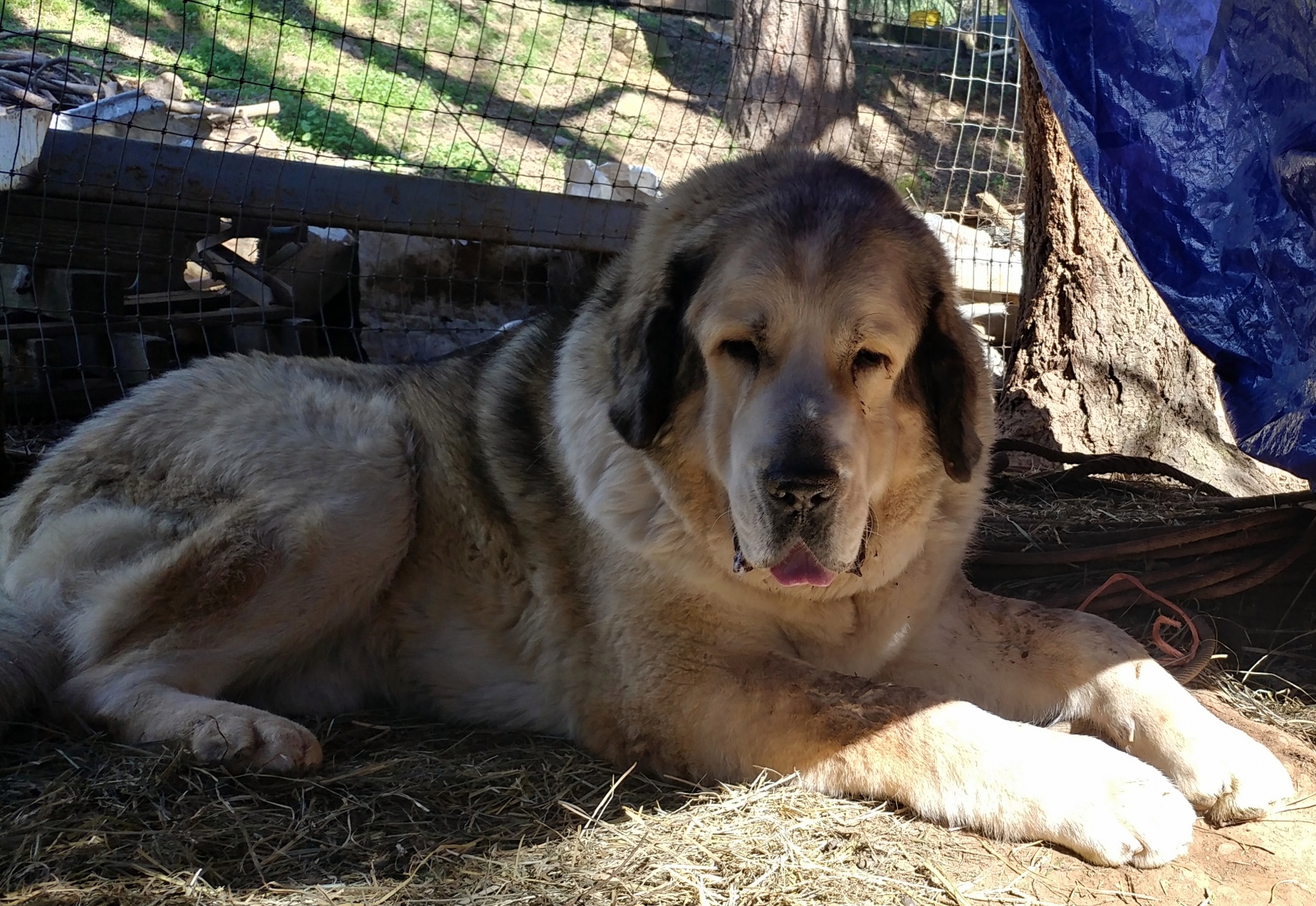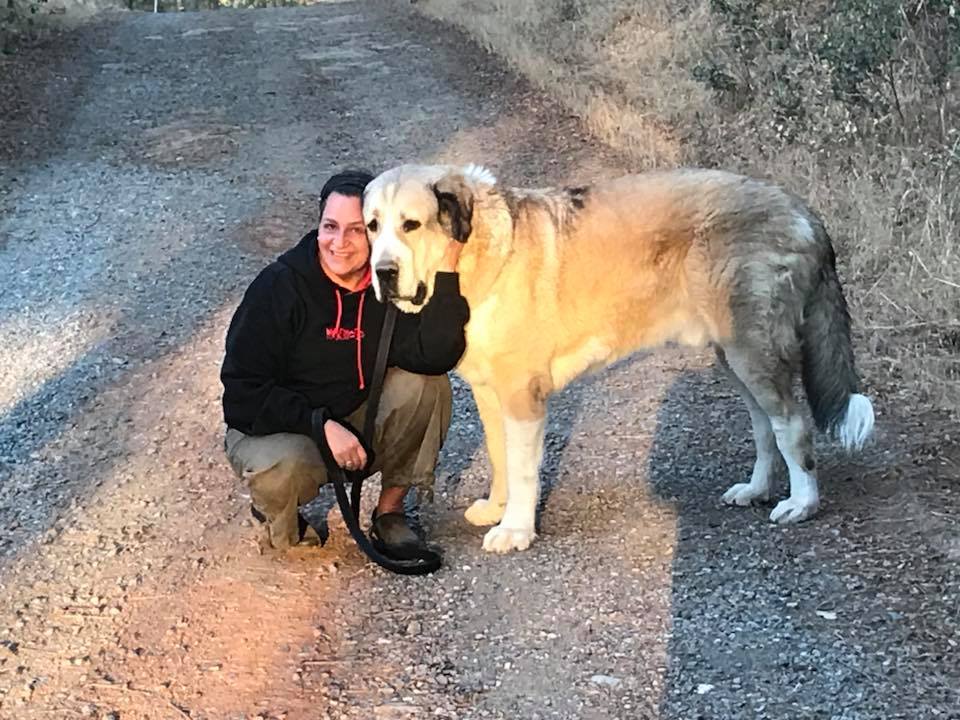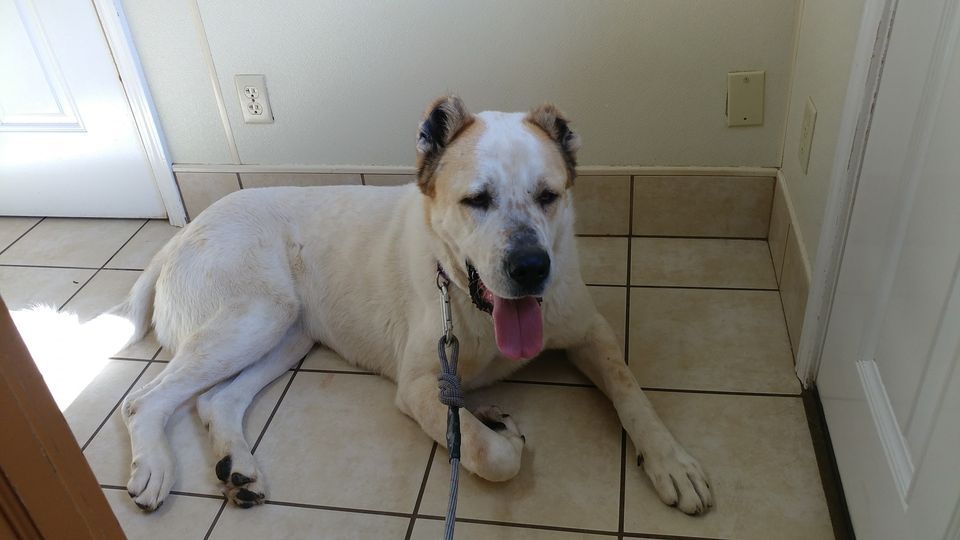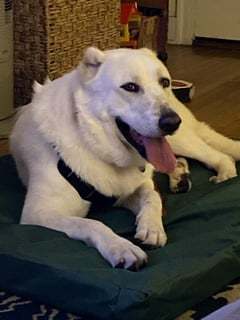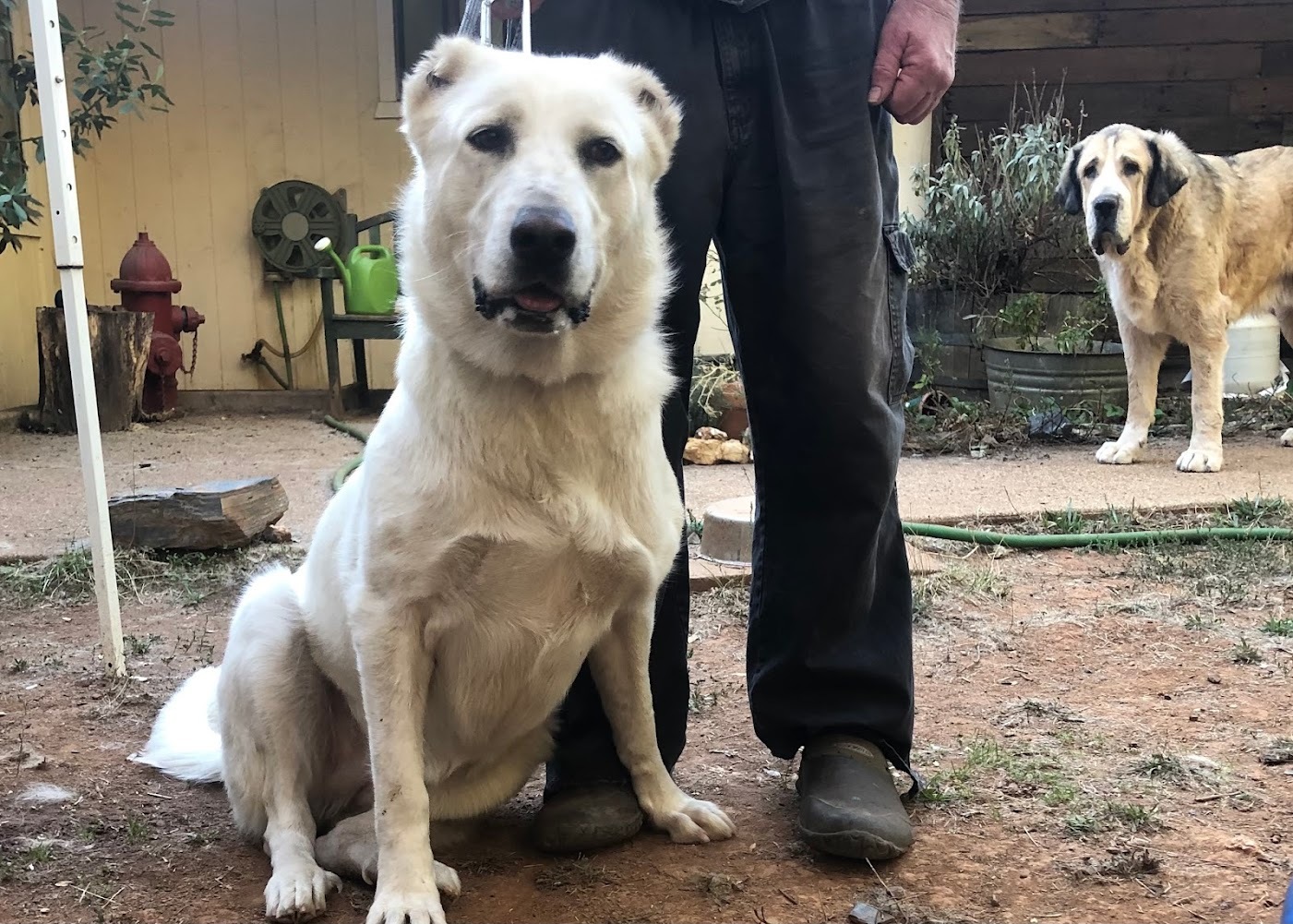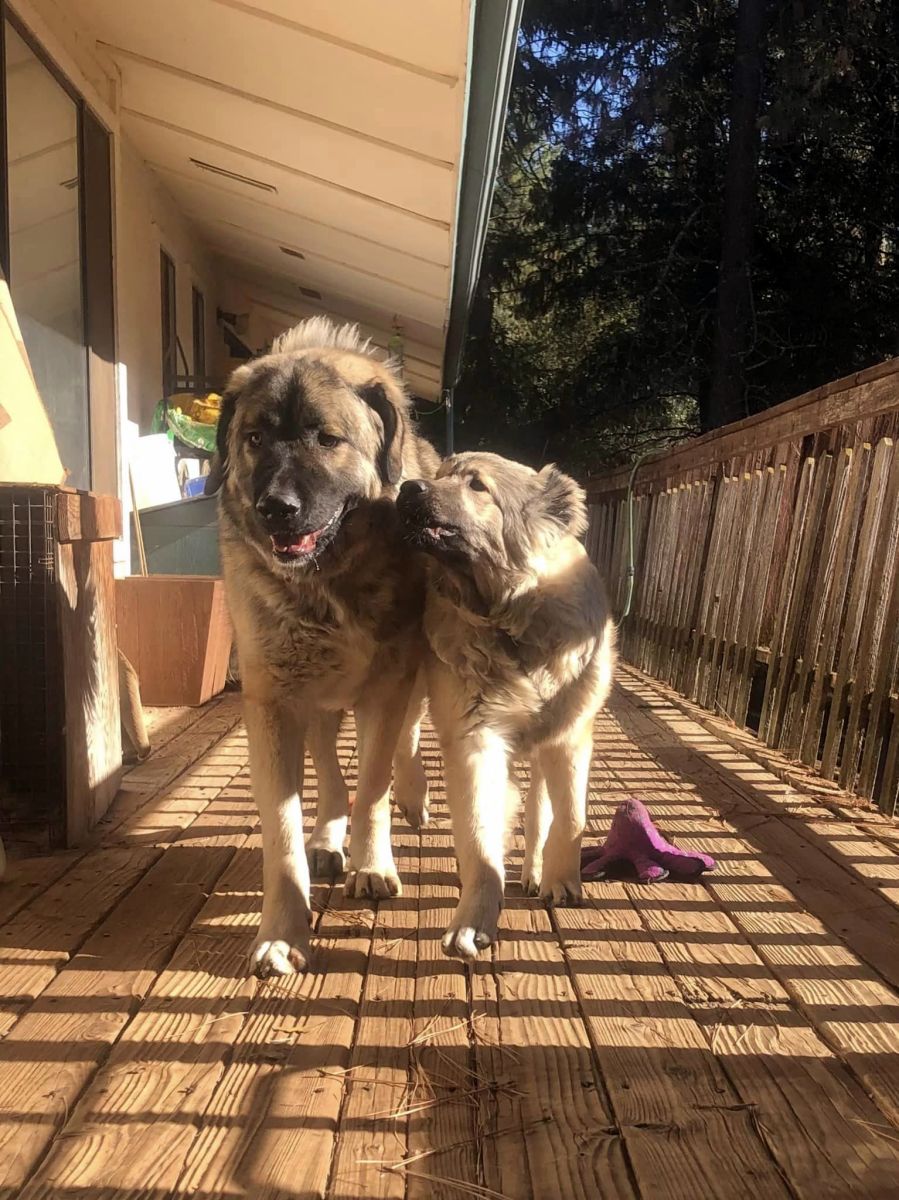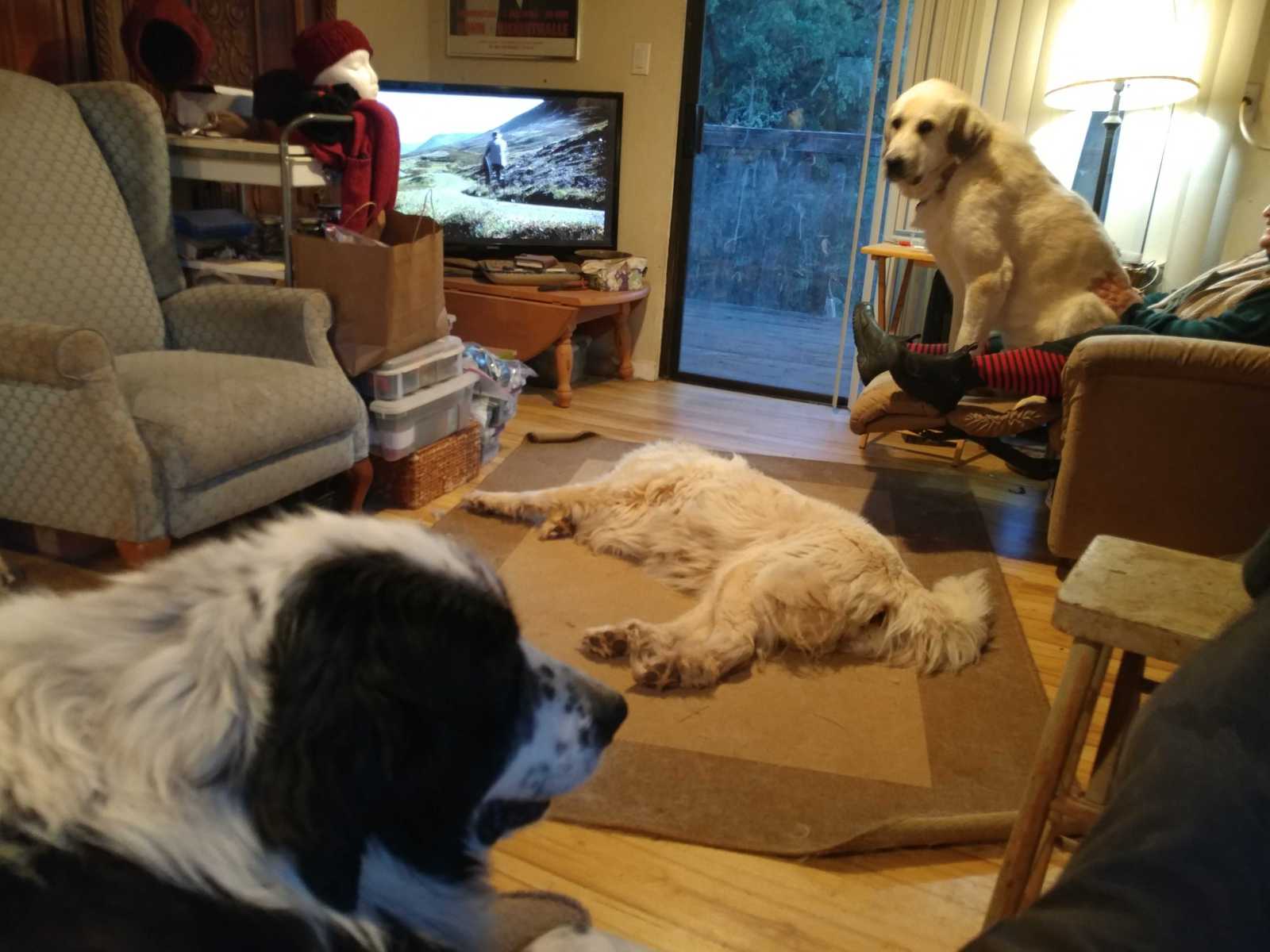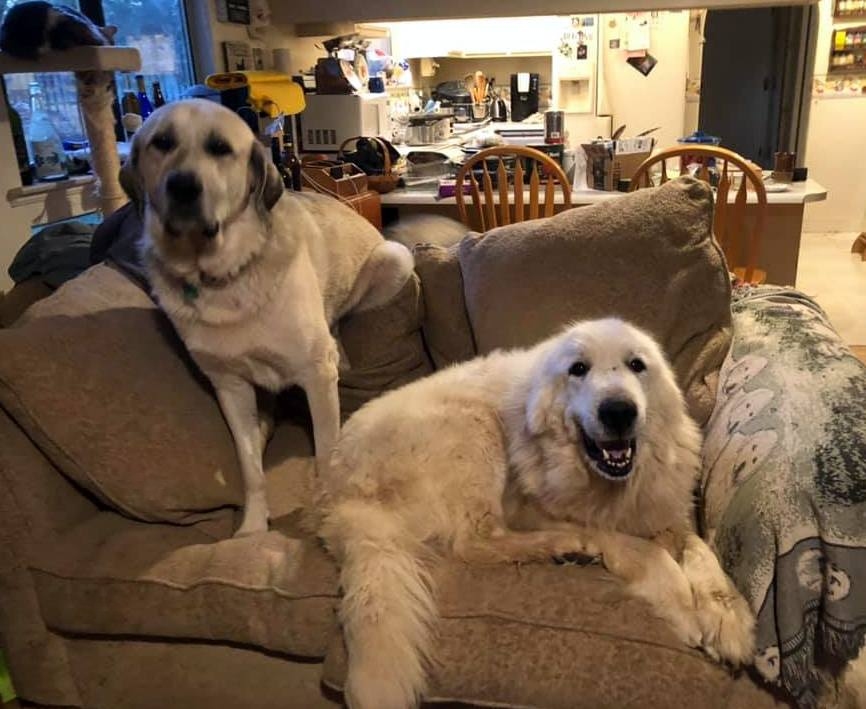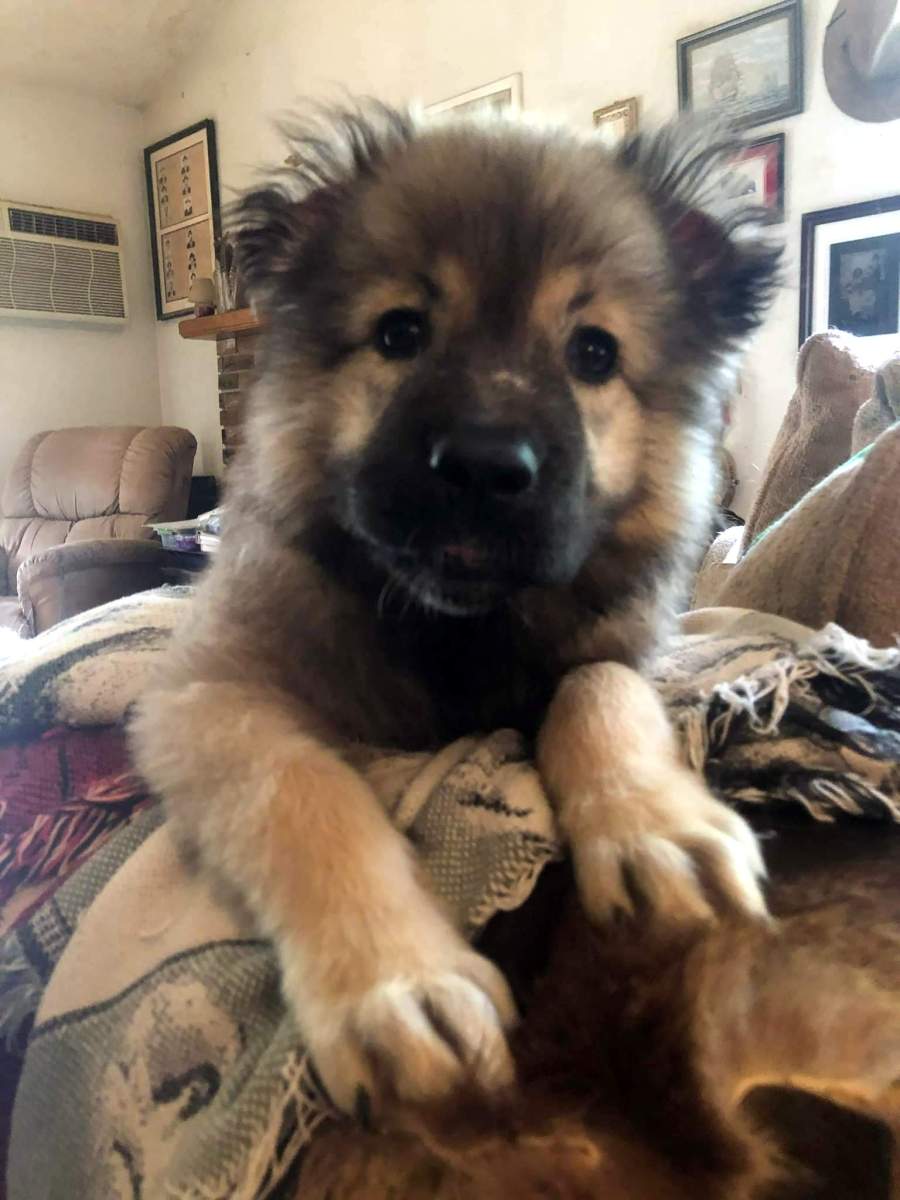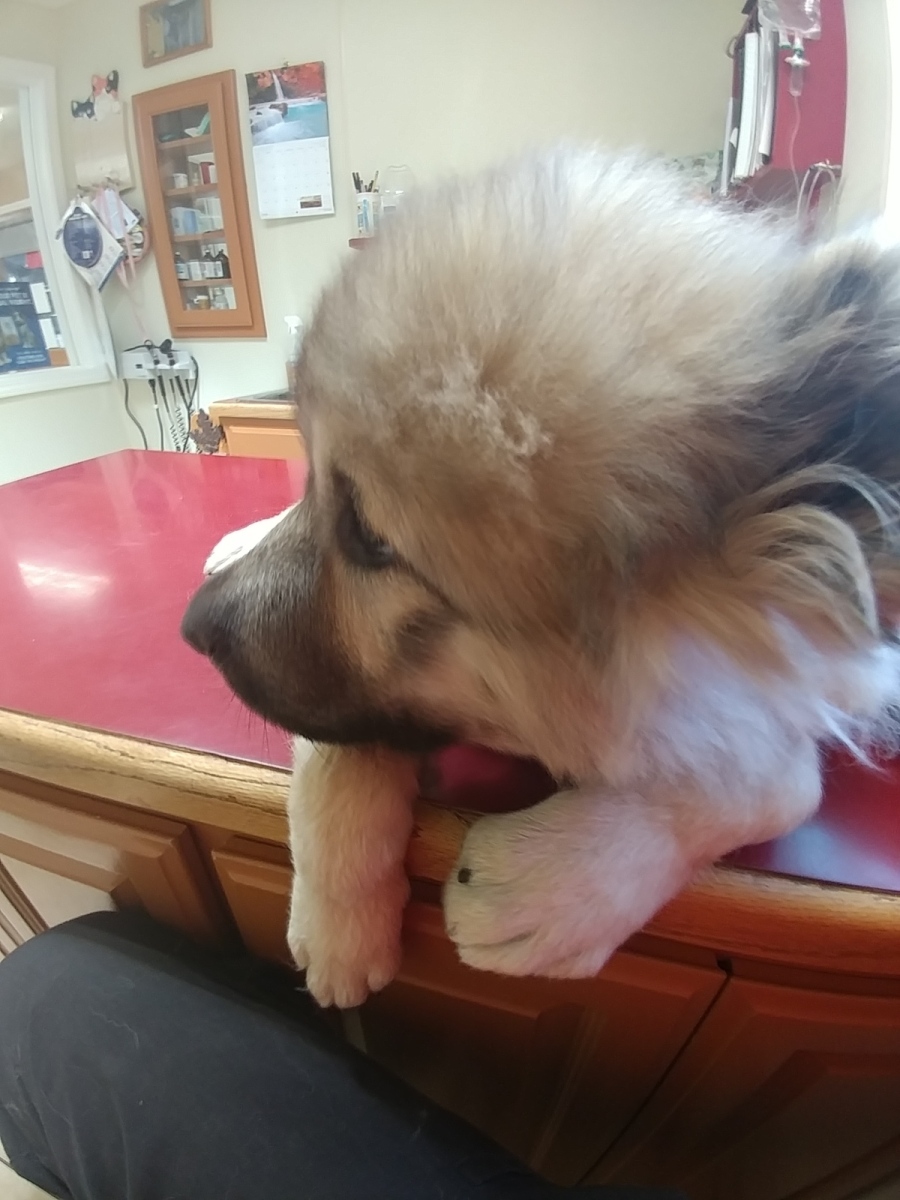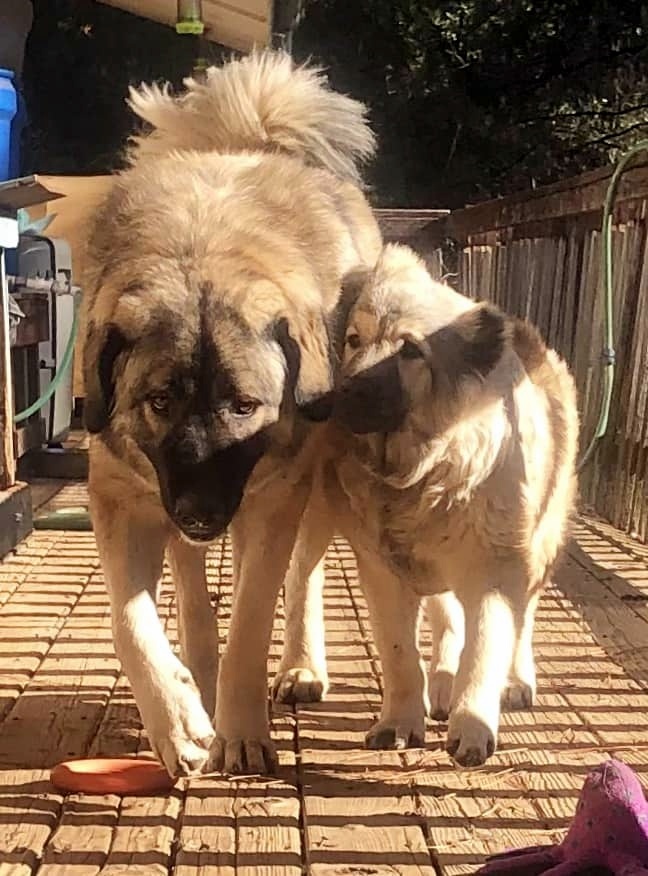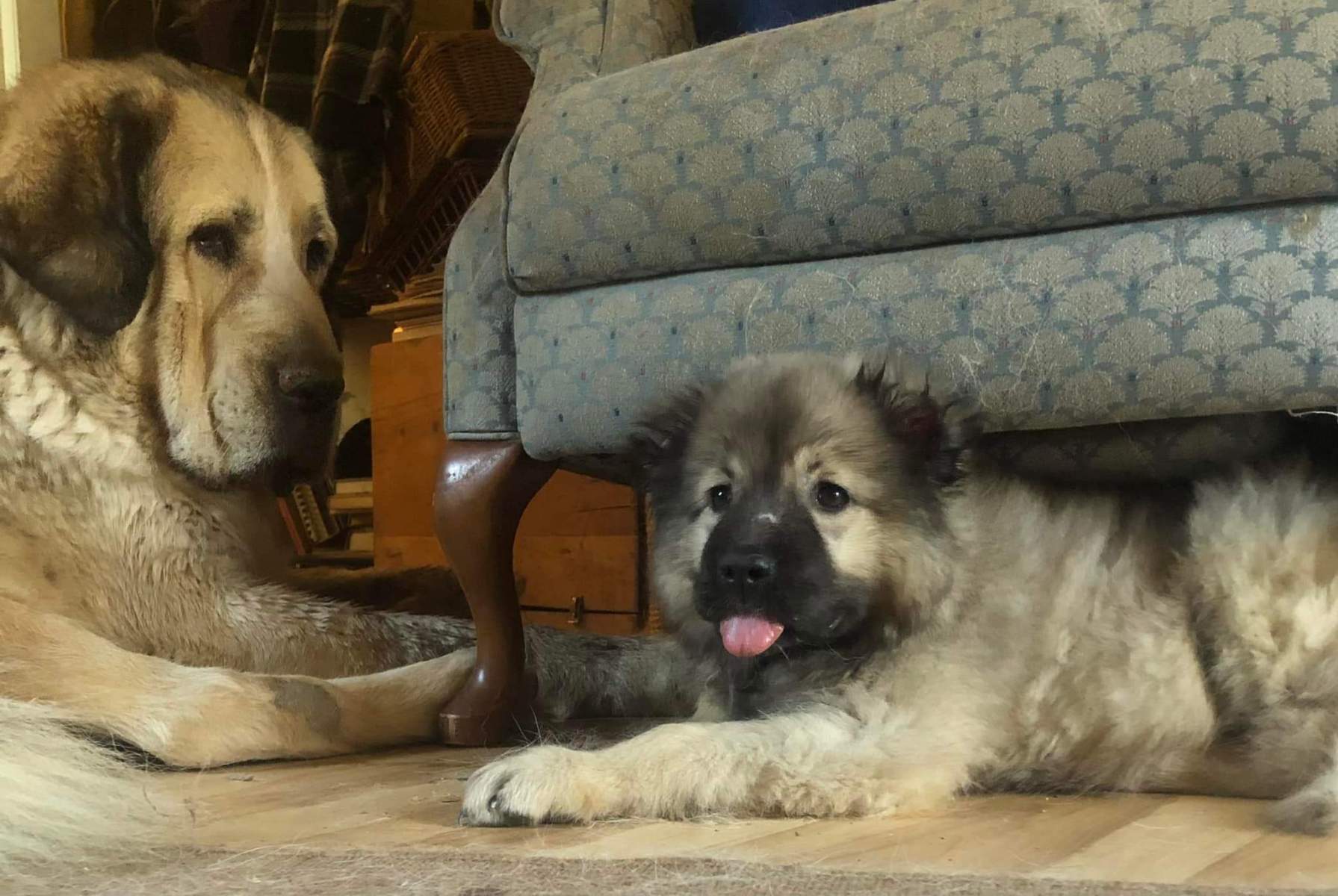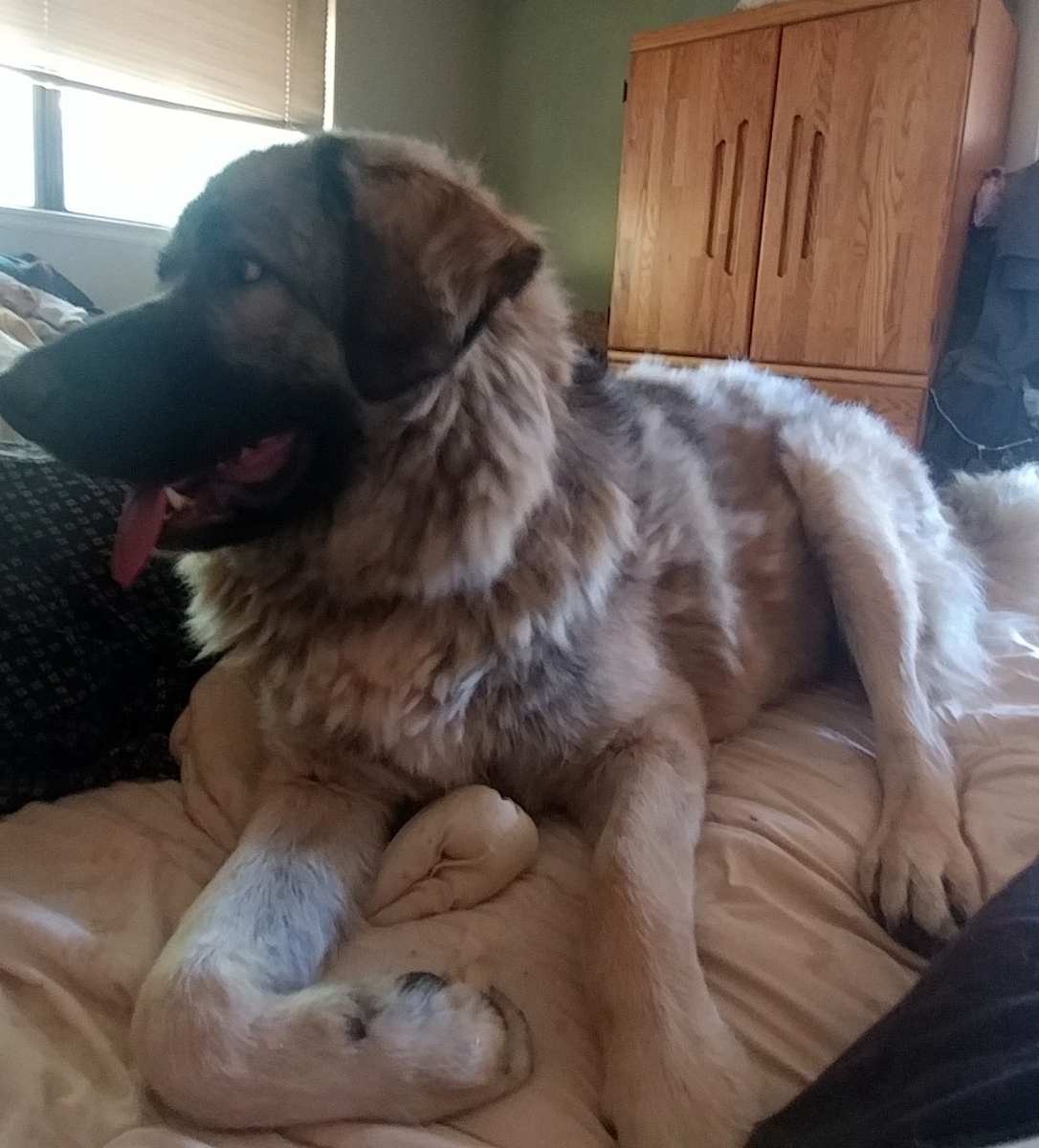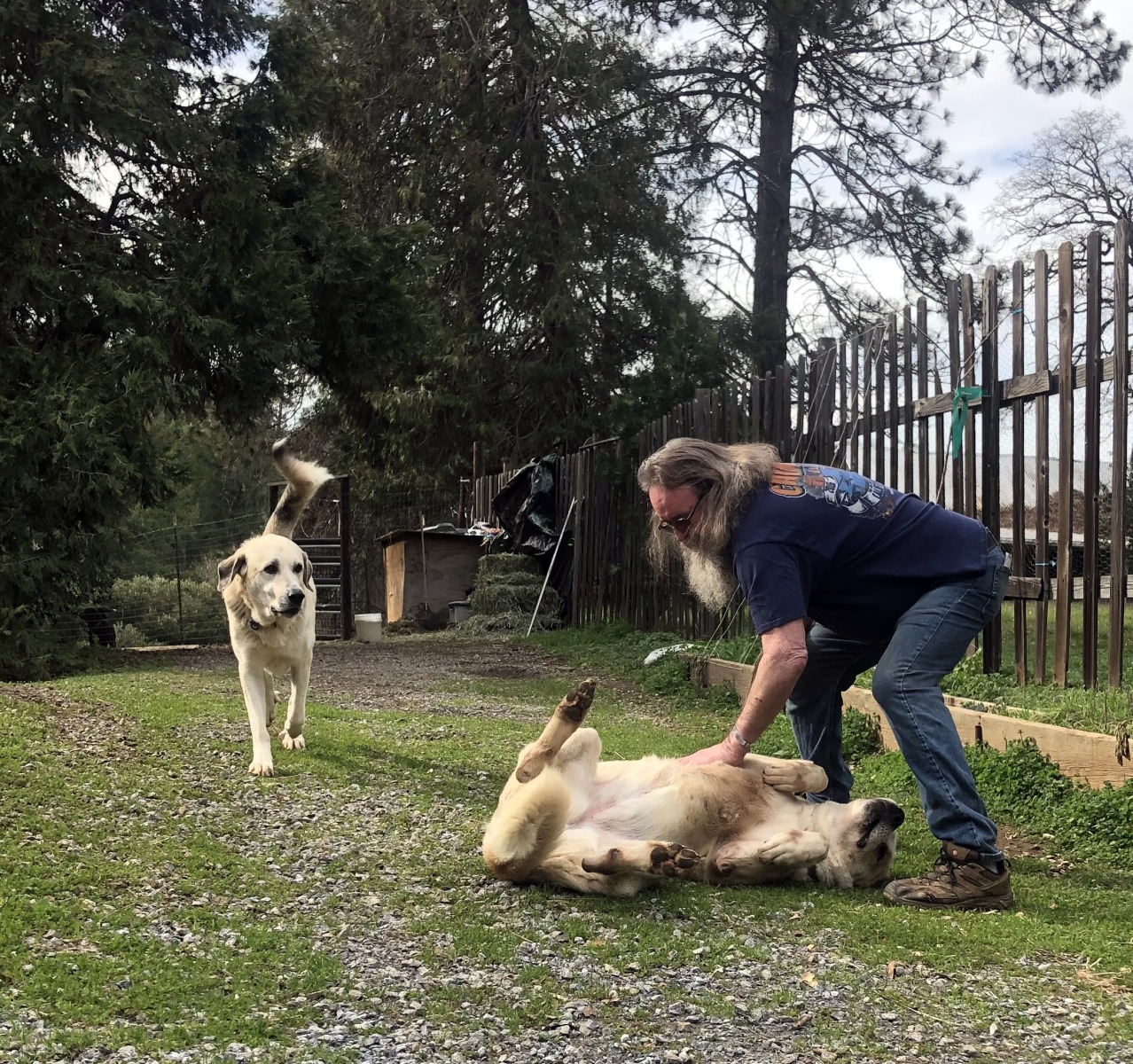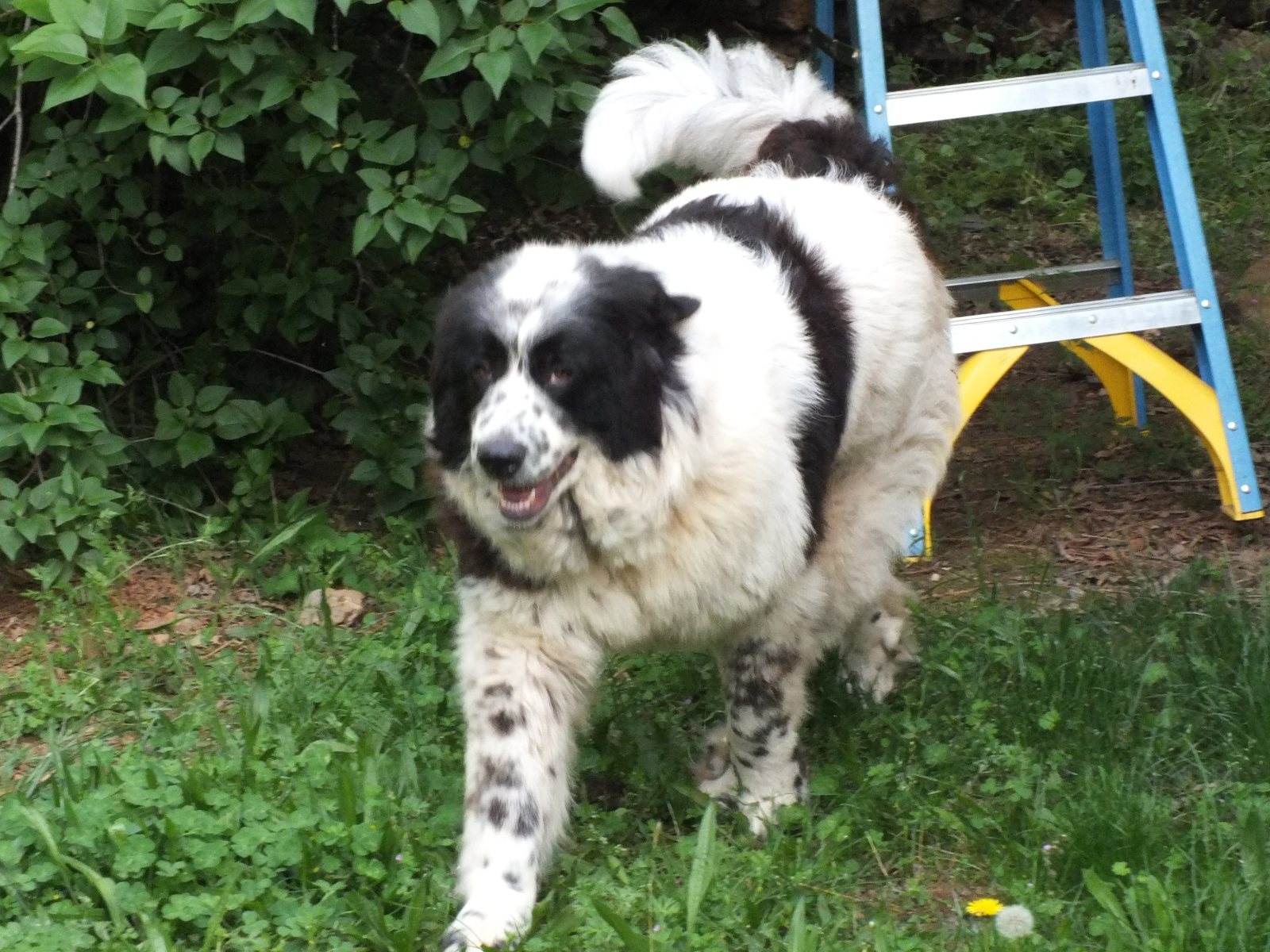The Sanctuary at The Silk Road Station
Sanctuary: A place of refuge and protection. An animal sanctuary is a facility where animals are brought to live and be protected for the rest of their lives. Unlike animal shelters, sanctuaries do not seek to place animals with individuals or groups, instead maintaining each animal until it passes away from age or medical issues.
We are endanger of having to close and these amazing dogs could lose their home. Please go to our GoFundMe at www.SilkRoadGiving.org and contribute to and/or share our GoFundMe to save our Sanctuary.



Siranoush the Pituitary Dwarf Caucasian Ovcharka
Siranoush, which means Sweet Love in western Armenian, is a 7m/o (as of Nov 22) Caucasian Ovcharka that was rescued form a nightmare hoarding/neglect situation in Nevada involving over 250 Silk Road breed dogs shortly before they were raided. She is a pituitary dwarf, which is a genetic condition that results in severely stunted growth due to hormone issues. Unlike Chondrodystrophic canine dwarfs, which is where the abnormal development of cartilage that causes the long bones of the body to grow at an abnormal rate and results in shortened legs and other abnormal structural development, Siranoush (aka the Wee Floof) is fairly structurally proportionate, just shorter than she should be and has other health issues as well. Also due to lack of early socialization, the stresses of where she was, and being confined in a small area for the first few months of her life, she has some behavioral issues (mostly fear related) as well. Due to both of these problems, she need will long-term medical care and a lot of behavioral work to help build her confidence which is why she will never able to be up for adoption and will live out her life in sanctuary.
The founders of Silk Road Rescue have experience with canine dwarfism having owned 2 other dwarf dogs and worked with several others, and even though we were already dealing with the potential of losing our facility, when we saw her being offered up by one of the breeders, we knew we had to do something to keep her to save her and stop her from being used to start breeding mini Ovcharkas, so made an emergency 20 hour round-trip road trip to rescue her. She was wet, filthy, and very sick when we picked her up. She had giardia, a dangerous parasite, which along with her living situation (competing with an older pup for food) was why she was underweight for her size. She also had a low-grade infection and her blood work was a mess, mostly from bad genetics. She is now under treatment for the hormone problems and is 2nd only to Duchess (a starvation/mange case we took on in late 2015) in the number of vet visits she has had to date. More vet trips will be a part of her future.
Currently she is about 30-40lbs under where a standard Ovcharka would be at this age and should be over one third again as large. It is unknown how big she will actually be once we get her hormone levels to where they should be but she will likely never be full size, though she will have all the attitude of an Ovcharka (the joke here is "Half the Ovcharka, twice the attitude")!
Ludo the assertive Caucasian Ovcharka
Ludo is an approximately 2 1/2-year-old Caucasian Ovcharka. Caucasian Ovcharkas (Aka: Caucasian Shepherds, Caucasian Mountain dogs, or COs) are a fairly rare (but becoming less so) LGD breed from the Caucasus mountains region of what was the old southern USSR. While still used as LGDs in their home region as well as for military and prison guard work, COs are more often used in the US for property guards, family protection, and more and more for guarding marijuana grows in northern California. There are a few lines here that do use them as LGDs but often they are more dog than the average small farm needs. They are not a good dog for the average pet owner or those new to LGD breeds. Most people generally have no need for a working dog like this and if you don't do your homework, it can be a disaster.
He is what we euphemistically refer to as "very assertive" and very reactive. He came to us thanks to Mara Segal and the amazing people at Redwood Pals Rescue in Humboldt county, where he had been in the Humboldt County Animal Shelter there after having been seized from an homeless itinerant female pot trimmer (preparing marijuana for sale after harvest) who loved him very much but who had been living out of her car and leaving him tied to it for long periods because she had no other place for him (and also likely that she had him guarding her car). Partly because of that lifestyle, and the threats that woman in that industry face, he is VERY reactive towards men, and people in uniform, and especially hates men in uniform, which made his stay in the shelter problematic to the point that he was heading to be put down when we were brought in. As you can see from one of the pictures here that his first meeting with our male co-founder was "interesting" to say the least. However, we've been down this road before, we met at a neutral place with lots of distractions, and we came prepared with multiple bags of tasty treats. After about an hour's worth of work and several bags of treats he was able to be walked by us and loaded in to the transport with no problems.
He has been here a year this December 2022 and is worked with frequently. There have been a few "discussions" along the way and it's taken a lot of work to get him to be safe with us, to come in the house, and to be able to meet other people. He has become ok with another male board member (who always comes with new goodies) but has fallen in love with our other co-founder who is a woman and loves to come in the house to hang with her. With the arrival of Siranoush the "Wee Floof" pituitary dwarf CO, he has a new job and that's being big brother and chew toy to her. While she is mostly in the house, she does spend time with him and Duchess learning to be a dog and burning energy in play. It's hysterical to see this 170+_lb moose on his back with 60lb her on top of him being the fierce Floof! lol
He still has some triggers and still has a long road ahead of him but he is safe with us and we will do whatever we can to keep him safe for the rest of his life.
He is sponsored but does need help from you to save his home. Please go to www.SilkRoadGiving.org to help save his "fur-ever" home.




Simon aka: Little Shouty Man (which is saying something for an LGD breed!)
Details pending on Simon the week of 11/27/22
Enise the bilingual Armenian Gampr
Enise is an approximately 8 1/2-year-old Armenian Gampr (գամփռ Hovashoon) who understands both English and Western Armenian commands and absolutely melts with joy when spoken to in Armenian (our co-founder is of Armenian descent). Gamprs are an ancient LGD breed that originate in the Armenian Highlands which is bounded by the Anatolian plateau, the Caucasus, the Kura-Aras lowlands, the Iranian Plateau, and what was Mesopotamia or Fertile Crescent (which is where sheep and goats were domesticated, an important fact). In Armenia there are breed lines that are used to protect stock (Hovashoon) while other lines are used to hunt wolves (Gelkheh). Gamprs and CAOs, along with Sage Kuchi (Afghan LGD) appear to be regional variants of the same "land race" but are not the same "breed" and it's not known which came first, though the breed's proximity to the origin of sheep and goats makes for a good case for the Gampr.
Enise sadly has Mast Cell cancer, which is why she is in Sanctuary and not available for adoption. She is on medication and it appears to be in remission currently. She is also a multi-home "bounce". She first came to our attention while in a Southern California high-kill shelter with her brother. They had been turned in by someone who no longer wanted them. She was adopted out of the shelter by a well-meaning person who had been advised not to get the dog due to her (the adoptee) already having two other females, one a CAO. Most LGD breeds are same-sex aggressive and while you can have same-sex pairs, it often comes with fights and vet bills. Enise did not get along with the other dogs in her new home so first turned over to another high-kill shelter, then to us. She was supposed to be adopted by the man that adopted her brother from the shelter but after his visit and one phone call, he was never heard from again. She was adopted several years ago but then began to be boarded back with us, then returned to us entirely, when her new owner had housing issues, then became unemployed, and when it was also determined that she likely had cancer. She is currently being treated with basic meds but advanced intervention is very expensive and has a low success rate so is not currently planned.
Enise's food, treats, and meds are currently being sponsored by a friend of a family friend. We are very grateful.




Isabella the reactive Central Asian Ovcharka
Isabella is an approximately 4-year-old Central Asian Ovcharka owner turn-in that now is in her 6th landing place (including a over-crowded muni pound, and a month and a half in a Vet clinic kennel!). We were first contacted by her owners looking for help with her extreme small animal reactiveness and separation anxiety. It's difficult to train remotely but some progress was being made until one of her owners was injured by her bolting after another dog. A 12-hour rescue run later and she was here. She is going to take a good deal of work so is not available for adoption at this time. She love people but we think she was likely taken away from her mother and litter-mates too early so doesn't know how to behave around other dogs, which is why she is partnered up with Stiever from the Pound Sterling rescue litter. We've started with refreshing the basic obedience work her prior owners had started on and are currently working on the commands "wait" and "leave it". This will lay the foundation for the rest of the work that she will need to be a good dog for a future home. Her prior sponsor flaked out on us so we can always use help with her food and incidental costs.
Stiever the Akbash-Anatolian-Great Pyrenees good boy
Stiver (English slang term for a pre-decimal penny) is a 4 1/2-year-old Livestock Guardian Dog breed mix that was was born here at Silk Road Rescue when his mother and father were turned over to us because she was about to have pups and the owners weren't able to handle the whole process of having and raising puppies. He was one of nine, and though he does well with livestock (we don't know about loose poultry though), he prefers humans more and would rather hang with them over the animals. That and "Black Dog Syndrome" (well known in the rescue and shelter world. People generally won't adopt back dogs, especially those of working breeds) have made placing him difficult. He is currently housed with Izzy and has made the perfect partner for her as she is reactive to other dogs and will try and bully them over food and the like. She has had several fights with other male kennel-mates and while she and Stiver have had their disagreements, they have been mild. He just ignores her when she is like that, and won't let her steal his food, but will play hard with her, which is what she needs. She is learning to behave better with him around which is why he is in sanctuary and not for adoption. We are hoping that when the time comes, that we can place them together but that will take a very exceptional home.



The Amazing Mazie, a retired working LGD.
Mazie is an 8-year-old retired working Great Pyrenees (who are not considered a "rare" LGD breed) who is not a rescue but belongs to the family that fosters all of our dogs and founded the sanctuary. She was bred to be both a show and working dog, didn't like showing very much but loved her job. She protected the goats that we use to test and train LGDs, and helped raise and mentor several rescue litters whose mothers weren't in our program for some reason or who weren't good LGDs themselves, though she didn't like to be pestered by pups! She also was part of the testing program for male rescues for both Silk Road and the now-inactive Great Pyrenees Rescue of Northern California (GPRNC). She helped mentor her replacements and because they were ready to take over, and she has several major health issues including cancer, she has been retired to the couch (with occasion property patrols to show who's queen here). Mazie is an example of how proper socialization and training when she was a pup pays off when it's time to retire, and also an example of one way LGDs should be cared for when they are too old to work. She has earned her time in the house.
Mazie does not require sponsorship, just pets when you meet her. Those she demands. If you don't obey, you get the infamous Pyr Paw Pat!
Duchess the starvation case/wonder dog
Content pending the week of 11/28/22

In Memoriam
This is in memory of those sanctuary dogs that have passed in 2022. We miss them a great deal. They have left huge holes in our hearts

Omar the Central Asian Ovcharka (Shepherd)
Omar is a 10-year-old Central Asian Ovcharka that stands over 32″ tall and weighs in at a whopping 185lbs (scale weight). He is the perfect example of this breed not being the dog for the average pet owner. The CAO is an ancient Livestock Guardian Dog (LGD) breed that, as it's name implies, originates from Central Asia/Asia Minor around the Ural River, the Caspian Sea and farther east to present-day western China, an area that once was part of the old Southern USSR and now encompasses what are colloquially known as "The Stan Countries" (ie: Kazakhstan, Afghanistan, Uzbekistan and others) and south into Northern Turkey and Armenia.
Even though Omar wasn't bred as, or being used as, a working LGD, he took his job of protecting his family so well that they became afraid of him and due to changes in the family, was headed for death row. He's become too old to place now so became part of the Sanctuary crew and will live out his days in the sun. You can read more of his story here
>
Notahku the Traveler
Notaku, who's name in Miwok means "The sound a Bear makes passing in the night" is, like Mazie above, a retired working Great Pyrenees but unlike her was an early special Silk Road Rescue case that was adopted by our foster family. He's estimated to be somewhere between 9 and 11 years old and came into the Silk Road program when his owner died and the ranch caretaker abandoned him, some cats and a handful of hound mixes on a isolated run-down 100+ acre former cattle ranch an hour west of Red Bluff California deep in Californian's coastal range. Silk Road Rescue was contacted by an estate attorney to look at, evaluate, and if possible help place what was first reported to be upwards of "a dozen Pyrenees" that had been abandoned after their owner died. A neighbor had been dumping food for the dogs and animal control was going to seize what animals were still on the property and take them to a high-kill county pound. After a 4-hour emergency run, late in a March afternoon, Silk Road's founder arrived to find that there were only maybe 6 dogs in ramshackle kennels, all non-LGD mixes, all in decent physical shape considering, but none were approachable. While looking around the property to see if there were actually any LGDs on the property he hears a set of low, growing, deep "woofs" behind him. As he tells it, he freezes and his first thought was "oh c**p, that's a male Pyr, he's not happy I'm here, and he's between me and the car".... Yep. It was. Thus as the first meeting with the boy later named Notaku due to the reports from ranches miles around of him patrolling past their places in the night
Due to the situation and the chance that Notaku would be shot the next day, or not make it out of the pound (we knew the local authorities and that facility very well via the old GPRNC) it was decided to capture him and bring him into the program. This was accomplished with the help of one of the barn cats on the property giving the founder the cat seal of approval (the cats were rescued the next day by a neighbor just ahead of Animal Control showing up). Shortly after his arrival at our foster family's farm, their last senior LGD passed and Mazie needed a partner so he was adopted by them and has protected the LGD training/fire protection goats over the ensuing 4-3/4-years. He also helped provide an example of how do do the job of an LGD to the Pound Sterling litter, though he did not tolerate them at all! Now that he has slowed down, and two of that litter are old enough to take on the job, he has retired to the front yard where he gets to patrol a little, get more dog "cookies", not have to deal with butt-head goats, and spend all the time in the sun that he wants.
Notaku doesn't need sponsorship, just cookies and maybe an ear skritch, but on his terms.




Ursa the Ancient Caucasian Ovcharka
Ursa, a Caucasian Ovcharka (Shepherd) is the "Babushka" (Russian for old woman or Grandmother) of the program. She is believed to be somewhere between 12-13 years-old, if not a bit older and was the first of the Sanctuary dogs. Caucasian Ovcharkas are a relative of the Central Asian Ovcharkas as well as many other LGD breeds. The Caucasian Ovcharka (CO) is much like the Central Asian Ovcharka (CAO) in many ways as far as uses and temperament go but are a long-coated breed that originates in the Caucasus Mountain region of Central Asia in the countries of Georgia, Azerbaijan, Armenia, and the Southern Russian Republic of Dagestan. You could say that the CAO are/were the Steppes or lowland dogs and the CO are/were the mountain dogs.
Ursa was found wandering in the suburbs east of Portland Oregon and was brought to us via a "rescue run" when she was unclaimed. When we were first told of her, she was reported to be around 6ish. When the rescue that was assisting with her had her spayed, the Vet reportedly said she was around 4- 4 1/2-years-old... Boy was she wrong! When we met the rescue runner and got our first good look at her, it was obvious from her look, movement, and teeth that she was at least 8 if not older! It's already very difficult to place a senior dog and placing a senior Silk Road breed is almost impossible, which is why Silk Road Rescue usually will not take in a dog older than 7. However, she was here (and an absolute love) so we had no other choice but to take her in and give her her forever home. While not a working dog, she still has the instincts and even though she is now almost completely blind and mostly deaf, she still likes to go on patrol and hang out on high ground. She also very much has the heart of an Ovcharka and takes no guff form the "youngsters".

